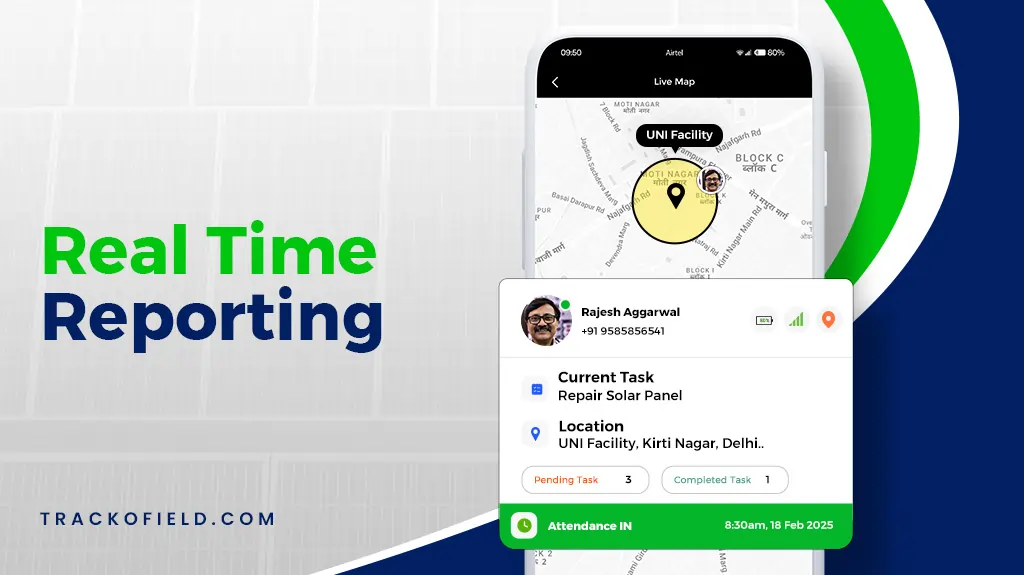-
TrackoBit
Manage commercial vehicles with the new-age Fleet Management Software
TrackoBit -
TrackoField
Streamline your scattered workforce with Field Force Management Software
TrackoField -
Features Resources
-
Blog
Carefully curated articles to update you on industrial trends. -
White Paper
Insightful papers and analysis on essential subject matters. -
Glossary
Explore an alphabetical list of relevant industry terms. -
What’s New
Get TrackoBit & TrackoField monthly updates here. -
Case Study
Explore the cases we solved with our diverse solutions. -
Comparisons
Compare platforms, features, and pricing to find your best fit.
-
About Us
Get to know TrackoBit: our team, ethos, values, and vision. -
Careers
Join the most dynamic cult of coders, creatives and changemakers. -
Tech Support
Learn about our technical support team and services in detail. -
Events
Check out the exhibitions where we left our marks and conquered. -
Contact Us
Connect with us and let us know how we can be of service.
Every Missed Solar Inspection is a Risk — Field Tracking is the Fix
- Author:Mudit Chhikara
- Read Time:7 min
- Published:
- Last Update: July 31, 2025
Table of Contents
ToggleStreamline your field teams’ workflow and fix missed solar inspections using field tracking software.
Table of Contents
Toggle
The solar energy industry is rapidly growing due to the increased demand for sustainable yet cost-efficient energy sources. Many regions, especially remote but sunny areas rely on solar power to meet their daily needs.
However, solar panels aren’t a one and done type of technology. They require regular inspections to troubleshoot issues, gather customer feedback or identify areas of improvement.
But managing inspection schedules across multiple sites, often in remote areas can be challenging. This is where a field employee tracking system can be handy. Dive in to learn how!
Why Inspections Are Critical in the Solar Energy Industry?
Before we get to the workings of field tracking for solar companies and its benefits, let’s learn why inspections are critical.
Solar companies conduct various types of inspections at different stages. These include:
- Pre-installation site assessments for compatibility
- Post-installation quality checks
- Routine maintenance inspections
- Warranty or performance-related service visits
Each of these stages must be completed on time to avoid costly delays, energy loss, or contract penalties.
Common Challenges in Solar Field Inspections
Inspections of solar panels is no easy task. Solar companies face several challenges while carrying out inspections. These include:
- Managing and coordinating with workforce scattered across remote areas with poor network.
- Manual shift & task scheduling errors which causes overlaps, delays or missed visits.
- Lack of real-time visibility on solar field technicians’ locations and inspection task progress.
- Inaccurate or slow data entry due to manual reporting using paper forms or spreadsheets.
- Limited accountability without time-stamped proof of visits or proof of work.
While these challenges seem like a lot. They are easy to tackle using a field force tracking system built for solar companies.
How Field Tracking Software Streamlines Solar Panel Inspections?
Here are 6 ways solar company managers can overcome inspection challenges and streamline field agents’ workflow with field force tracking software.
1. Intelligent Inspection Task Planning
For solar panel inspections, companies rely on field executives. Thus, ensuring they perform their tasks diligently and on time is essential to ensure optimal solar inspections.
How? Well, the most viable way is to use field tracking software for intelligent task management. Using the software, managers can:
- Define categories of inspections (maintenance, warranty, pre-installation) for convenient staff allocation.
- Assign inspection tasks with estimated durations, detailed descriptions and priority.
- Attach media files like voice notes or images to explain tasks better.
- Automatically notify field agents of any task allocation or modification.
- Use calendar-based task allocation to schedule inspection tasks with details in advance.
This way managers can ensure there are no task overlaps, all agents are equally occupied and working to their full potential.
💡 Smart task management also helps field agents as they can better plan their day, stay transparent with the task updates and reduce frustrations due to overlaps. Executives can also self-allocate any urgent tasks over the TrackoField app.
2. Smart Beat Planning
Since solar technicians visit various sites for inspections, they require optimised travel routes. Traffic, remote areas and miscommunication with managers are factors that can affect technicians’ travel and cause delayed client visits.
But worry not! Field force tracking software can handle this issue with smart beat planning. It offers features like GPS location tracking, route distance calculator and an integrated map. These can be used to:
- Review route playback history to analyse agents’ travel patterns
- Send real-time notifications about traffic and poor road conditions on the route.
- Select the shortest or fastest routes for solar technicians.
- Assign clustered visits or club multiple visits on the same route.
Thus, with beat planning, field agents save time on their travel and reduce fuel expenses. They also eliminate unnecessary back-and-forth trips and reach most customers in less time.
3. Automated Real-Time Reporting
One of the best ways to optimise solar technicians’ time is to automate their field operations. You don’t want your agents alternating between office and customer sites just to mark attendance or deliver updates.
With field force tracking software, you can leverage GPS and geofencing to accurately monitor technicians’ activities in real time. Managers can:
- See which technicians are active and at which location.
- Verify if technicians are at the correct site.
- Assign flexible shifts.
- Notify agents of any urgent update.
As for agents, they can use the mobile app to log inspections, mark attendance or raise various requests (leave, attendance regularisation).
Plus, geofencing ensures all inspection visits contain the exact time spent, on-site selfie verifications and geotagged or timestamped task updates. This provides verifiable proof of service and eliminates false reporting.

Real Time Reporting of Solar Field Technicians
4. Offline Tracking for Remote Sites
Solar inspections in areas with poor network connectivity can be a hassle. Lack of locational data or poor mobile connections results in miscommunications and delayed inspections.
However, with field tracking software work offline too. They allow agents to view their locations, access offline maps, view tasks, record visits and mark attendance even without network.
Once network connectivity is regained, all the data is promptly synced to the software. This prevents any workflow disruptions in remote areas and boosts timely inspections.
Offline Tracking of Solar Inspections
5. Simplified Field Data & Proof of Work Collection
Manual data entry in sales businesses should be a thing of the past. Not only is it time consuming but also prone to errors. Instead, solar company managers should automate data collection using field force tracking software. It allows managers to create custom survey forms with any number of custom fields.
Field technicians can easily access these forms and fill them digitally or share them with customers via QR code or URL. As a result, customers can themselves enter data like customer details, feedback, complaints, scope of improvement, etc.
The software also simplifies uploading proof of work. At inspection sites, technicians can use mobile app like TrackoField to upload time-stamped photos of panels, meters, inverters and more. They can also take digital signatures to save time.
Thus, digital data collection reduces errors, prevents repeat visits to collect various types of data and eliminates paperwork.
6. Data-Driven Decision Making
Any good field tracking tool safely stores all the customer and technician data on cloud servers. This data can be analysed by managers to make long-term decisions.
Managers can track their inspection teams’ performance, set & measure KPIs for field service and identify hidden errors before they turn big.
Here’s what you can track:
- Inspection time per site
- Total inspections of the day
- Daily distance travelled report
- Inspections completed, cancelled or rescheduled
- Technicians’ work hours and break times
Using data analysis, managers can spot patterns. They can check in which seasons panels face most issues and keep resources available beforehand or schedule pre-emptive inspections.
They can also find ways to improve technicians’ productivity, identify if they need more training or forecast market demands.
Managers can also schedule routine checks based on best time for maintenance. This can be done by checking the past history of panel issues. For example, if issues occurred 3 or 6 months after installation or in certain months.
4 Major Benefits of Timely Inspections for Solar Companies
So far, we have covered how to optimise solar inspections. But what is its benefit? Well, here are top 4 benefits solar companies can avail by ensuring timely inspections.
- Managers gain visibility into solar technicians’ workloads and territory coverage.
- Emergency inspections or repairs can be routed to nearest available technicians for faster response time.
- Timely, transparent service builds trust and boosts market presence while also enhancing customer satisfaction.
- Automated employee reports and audit trails make it easier to comply with local energy board standards.
Conclusion
Timely and accurate panel inspection visits are a must in the solar energy industry. Any delay can cause energy loss for the consumer and affect brand credibility.
But ensuring timely inspections can be challenging as solar panels are often installed in variety of geographical sites, which can be remote. Poor workflow management is another reason for delayed inspections.
But the solution is easy!
Field tracking software can help you overcome logistical hurdles, boost technician’s productivity and ensure high-quality customer service. With features like GPS tracking, automated reporting and smart task planning, delayed visits can be made a thing of the past.
Get in touch to know more.
FAQs
-
Can field tracking software be used without internet access?
Yes, many field force tracking apps provide offline functionality. They allow field agents to log visits and tasks without connectivity and sync data once online.
-
How does field tracking software ensure data accuracy and accountability?
Field tracking software offers various unique features that help create transparent and verifiable records. This helps maintain accountability and accurate data reporting. Here are the features used: - GPS location tracking - Geofencing & timestamped logs - Digital proof (photos, signatures) - Route playback history
-
Is field tracking software customizable for different types of solar inspections?
Absolutely. Field force tracking software can be optimised to suit different types of solar inspections. Managers can: - Define custom workflows - Categorise tasks - Use tailored forms with custom fields
Mudit is a seasoned content specialist working for TrackoField. He is an expert in crafting technical, high-impact content for Field force manage... Read More
Related Blogs
-

Tired of Fake Field Visits in your MFIs? Face AI Attendance Can Help
Mudit Chhikara November 5, 2025How Face AI Attendance can help end fake field visits in MFIs for good.
-

Introducing Expense 2.0: Unified and Smarter Employee Expense Management
Mudit Chhikara October 31, 2025Simplify expense reporting for faster, easier reimbursements with TrackoField’s Expense 2.0 module.
-

TrackoField’s Powerful New Feature – Smart Task Approval Settings
Mudit Chhikara October 1, 2025Stop fake tasks & ghost visits with TrackoField’s new Task Approval Workflow.
-

7 Best Face Attendance Apps for Remote & Field Teams (2025)
Mudit Chhikara September 22, 2025Here are top face recognition attendance apps of 2025 to stop proxy attendance and boost field team productivity.

Subscribe for weekly strategies to boost field team productivity.
Your inbox awaits a welcome email. Stay tuned for the latest blog updates & expert insights.
"While you're here, dive into some more reads or grab quick bites from our social platforms!"Stay Updated on tech, telematics and mobility. Don't miss out on the latest in the industry.
We use cookies to enhance and personalize your browsing experience. By continuing to use our website, you agree to our Privacy Policy.


































